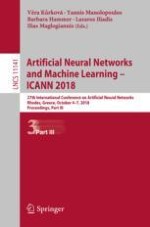2018 | OriginalPaper | Buchkapitel
Training Neural Networks Using Predictor-Corrector Gradient Descent
verfasst von : Amy Nesky, Quentin F. Stout
Erschienen in: Artificial Neural Networks and Machine Learning – ICANN 2018
Aktivieren Sie unsere intelligente Suche, um passende Fachinhalte oder Patente zu finden.
Wählen Sie Textabschnitte aus um mit Künstlicher Intelligenz passenden Patente zu finden. powered by
Markieren Sie Textabschnitte, um KI-gestützt weitere passende Inhalte zu finden. powered by
